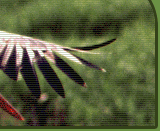| Project passport | | Project title | Purvu biotopu un sugu monitorings | | Project duration | 2003 | | Participants | Latvian Fund for nature | | Funding | Latvian Environmental Protection Fund | | Project Area | all of Latvia | | Co-ordinator | Māra Pakalne | | Contact | | Telephone | 7034875 | | Fax | 7034874 | | E-mail | mara@latnet.lv | | Address | Rīga, Kronvalda Bulvāris 4 | | LV-1010, Latvija | Thanks to the financial support of Latvian Environmental Protection Fund in 2003 Mire Habitat Management Plan was elaborated. It gives an overview of Latvian mires, their biodiversity, threats, conservation and management activities. Mires are threatened by peat extraction, drainage, mire use for agriculture and forestry and mire lake eutrophication. Therefore, a number of activities are planned for their conservation and management. Mire Habitat Management Plan foresees elaboration of management plans for protected mires, establishment of new protected nature areas for mires, complex research into mire geology, hydrology, ecology, flora, fauna, and vegetation. In the selected sites, mire monitoring should be carried out. Priority sites were distinguished for which mire management plans are to be elaborated first of all - Cena Mire, Stikli Mires, Lielo Mārku Mire, Klāņu Mires, Lauga Mire, Veseta Floodplain Mire, Gargrode Mire, Rožu un Vīķu Mires. Establishment of micro-reserves for plant species, such as Saxifraga hirculus, Juncus stygius, Dactylorhiza cruenta, Dactylorhiza russowii, Carex heleonastes, Pedicularis sceptrum-carolinum, Hydrocotyle vulgaris, Lycopodiella inundata occuring in mire habitats are to be continued as well as mire habitat inventory outside specially protected nature areas. To protect mires, the original hydrological regime must be maintained. After peat extraction, mire rehabilitation must be carried out including the restoration of the hydrological regime. In some cases, hay mowing may be necessary to preserve rare fen species and habitats. Former peat extraction sites can be transformed into artificial water-bodies that can be an important habitat for waterfowl. Mire footpaths can be established is some sites to introduce people to the flora and fauna of mires. In the territorial planning, mire habitat protection and peat resourse wise use must be favoured. Protection belts must be established around mires. We must always remember that during peat extraction and mire drainage, the hydrological regime changes and peat accumulation stops. The original mire status and its natural vegetation cannot be restored anymore. Part of the hydrophilous plant species disappear and are replaced by a degraded plant cover. Booklet has been published Mires in Latvia. It can be obtained in Latvian and English at the Latvian Fund for Nature. |








